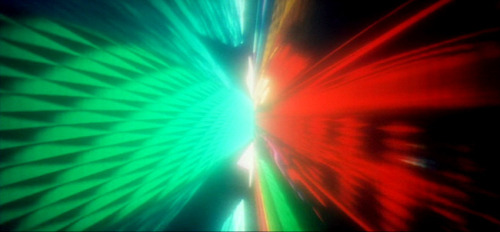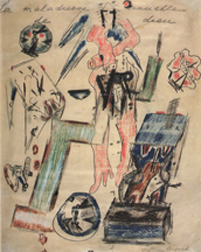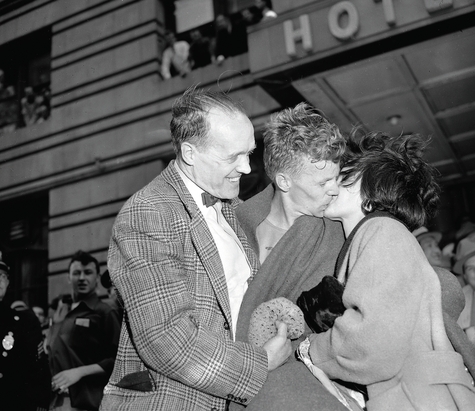
Beautiful + transcendental original music from Benjamin Farrar, interspersed with fantastic imagery –

Beautiful + transcendental original music from Benjamin Farrar, interspersed with fantastic imagery –
Fall on Alaska’s riversides reeks delightfully of the sweet smell of composting vegetation and the sour, pungent aroma of rotting salmon, spawned out and left to decay on the bank by the recession of high summer waters or left half-eaten by any of a number of their predators. Those still surviving are crimson, snaggle-toothed, hook-nosed, and rotting alive off of their skeletons as they swim weakly over their redds. Their eggs and trailing strips of flesh become an autumn bounty for trout, char, and grayling.
Dolly Varden (Salvelinus malma) were affectionately named after a Dickens character and are an anadromous char related to brook trout, lake trout, and their nearly indistinguishable cousins, Arctic char. They can be found in fresh and salt water between Puget Sound and the Mackenzie River. In summer they are a silver-sided fish like salmon, and during autumn spawning take on the colors shown here. Unlike Pacific salmon, they do not die with the deposit of their eggs. Through the 1920’s and 30’s they carried a bounty on their heads because they were seen as the primary predator of young salmon, a perception that was proven to be erroneous. Though still not highly prized as a game fish, they now receive protection across the state of Alaska, which limits angler take, and in some waters they are regulated as catch and release.
This specimen was taken and released unharmed from the Kenai River in Sterling, Alaska, using a fly designed of chenille, feathers, and rabbit fur to imitate torn salmon flesh.

Autumn is less dramatic here than it is back home in Mystic. The air cools, but only slightly at first. The leaves change slowly, if at all. However, the sky changes, it hangs a deeper shade of blue, and the clouds come in from the ocean and stack themselves against the hills.
She still had no idea why she said yes. Her auntie, she supposed.
“No one here still remembers. Everyone was young. Your father and uncle are gone.”
You remember, she thought.
“How will your brothers and cousins learn? No one at the school teaches the old ways.”
Nor would she. The line to the old ways had been severed long ago. Living elders and identified youngsters tried earnestly to splice the line, but with each fiber they secured, it seemed five times as many people wandered away into the 21st century fray and forgot.
The Beechcraft lurched forward as an opening appeared in the clouds. The pilot raced for the ground so as not to burn more fuel waiting. She watched ribbons of fog and snow peel back from the wings and flutter behind as the plane aimed with an insecure purpose for a depression in the white landscape below.
The runway in summer was a gravel pad piled over the flattest part of the tundra near the village. In winter it was an approximation determined by the plow. The pilot straightened the plane and began a short approach over the snow berm at the head of the runway. The windsock fluttered weakly as the wind slightly increased again.
She looked out the window and saw her house. She saw the dog yard where her incredulous father had strangled her favorite two puppies in front of her, on the day the principal had called home to say that he suspected, based on the child’s report, that her uncle had abused her. Her father was only too eager to accommodate her tear-choked shrieks that she be allowed to go live with her mother in Nome. It had saved her, but now she felt like she was risking her life again. The village disappeared behind walls of snow, and she felt the tires hit the ground, bounce, hit a second time and slide slightly to the left as the pilot feathered the brakes down the packed snow.
The plane made a casual u-turn and stopped as the props idled to a halt. Several people in a mix of fur and modern insulated parkas waited on snowmachines. Another lone figure sat off by the maintenance shed beside a low wall of boxes and luggage that had collected a small drift of snow behind it while he waited for that hole to open in the clouds.
One of the waiting party on sleds drove directly up to the plane and loaded parcels as the pilot emptied the plane’s tail and belly of cargo and mail. Then he sped back off the runway toward town followed by the others.The hole in the clouds closed. Fog swirled over the runway. The pilot cursed and climbed back in the plane. The man across the field rose and stared. She snugged the hood and collar of her technical shell tighter and pulled on the sealskin mittens her auntie had sent back when she graduated high school.
She picked up her cargo bag and her rifle and ambled in the general direction of the maintenance shed. The man looked at her but did not relax the embrace in which he held himself against the damp infiltration of the wind and sting of freezing fog. He stooped frigidly and hefted two pieces of luggage. “They told me I don’t belong, that I need to go.”
She smiled at him sadly and replied, “That was the last thing anyone said to me before I left here, too,” then continued her walk toward town.
gratitude for Ken Fish for the inspiration.
© Adam Knight
Mason's Stoup 7 [the Vernal Explosion] by tarbox69 on Scribd
from Mason’s Stoup 7, May 1992 –
and here we are, nearly 20 years later – how were the predictions?

As time passes, the human condition evolves to a more abstract dimension. Applying this concept of time to an historical perspective, we see that society is gradually moving towards a hyper-realization of its older order, towards an abstract integration of the past to formulate a new and abstracted order.
This acceleration of the abstracted reality into the present is an obvious process with an obvious end. Throughout history, the human species has evolved to higher and higher integrations of the abstract consciousness. Consider the development of algebra, the subsequent development of calculus, and the eventual conception of General Relativity. The movement of communication technology to a hyper-realistic state has allowed the human mind to transgress the limitations of the physical, such as the concrete boundaries of distance, and gain an effectual transcendence of time and space. Your telephone can access any other telephone on the planet. In Europe in the Middle Ages, well over ninety percent of the populace did not leave a ten mile radius in their lifetimes. To predict the next destination of communication, this function of the movement of technology may be extrapolated, whereby the arrival destination manifests itself in an ethereal state.
Likewise, the movement of artistic intent and composition has followed the routes of abstraction. The communication of art has gradually progressed into a highly abstract epoch. This movement is visible when one considers the discovery of the vanishing point and perspective, then the flirtations with time and individual perception known as impressionism, and penultimately, the immersion of art into the realms of abstract expressionism, minimalism, and the modernisms.
Musical efforts have also rapidly approached the abstract hyper-reality of post-modernistic development in the twentieth century. The electrification of primitive expressional instruments further moved the arts of 1ogical expression, inherently an abstract form, towards the ultimate heights of abstract reality. Electricity could universalize the expression, whereby more of the population could become part of the thought, and whereby the thought could pervade the reality to an unprecedented extent. The acquirement of electronic fluency brought about the advent of recording technology, whereby, like the invention of the written language, and later the printing press, the art form could usurp time.
Here true competence belongs to the literality of the interpretation of words. Besides, in what is improperly called the “commentary” of the drawing entitled La Maladresse sexuelle de dieu (The Sexual Awkwardness of God). It is not in order to exploit the awkward outreach of his mind. He was skinned naked in a bath of electricity, as each electro-shock patient is exposed to an artificially-created death – at this stage in Artaud’s work [1946], all manifestations of death are states of black magic that have to be overturned. This drawing (a treason and translation of the sexual awkwardness of god) are the ghosts of words are suddenly taking up the space. They reveal the original skill of the drawing: 
Throwing, throwing oneself: in words, as in painting, the intonation projects, it is dynamite content, the motion expelling it into a space that is nothing other than the elements of this tonal trajectory, the difference between the projectile and the subjectile, the latter sometimes becoming the target of the former. Artaud says it as early as 1931, in “La Mise en scène et la métaphysique” (Mise-en-Scène and Metaphysics), a lecture at the Sorbonne that deals first of all with painting: Words themselves have their own potential as sound, they have various ways of being projected into space, which are called intonations. And there is a great deal that could be said about the concrete value of intonation in the theater, about this quality that words have — apart from their concrete meaning — of creating their own music according to the way in which they are uttered, which can even go against that meaning — of creating beneath language an undercurrent of impressions, correspondences, analogies. . .
The following year, a letter to André Gide prescribes a bodily writing, a theatrical hieroglyphics: The movements, the attitudes, the bodies of the characters will be composed or decomposed like hieroglyphs. This language will pass from one sense organ to another, establishing analogies and unforeseen associations among series of objects, series of sounds, series of intonations.
The intonation that projects the words beyond their meaning, even into a counter-meaning: it is not only in the sounded work that it seems to have its place.
Like everything that is projected, it takes and in fact opens space, this “poetry in space” that “first takes on all the means of expression that can be used on the stage, like music, dance, paint, pantomime, mimicry, gesticulation, intonations, architecture, lighting, and decor . . . in our theater which has been living under the exclusive dictatorship of the word, this language of signs and mimicry, this silent pantomime, these attitudes, these gestures in the air, these objective intonations, in short everything I consider as specifically theatrical in the theater . . . carelessly called ‘art.’
